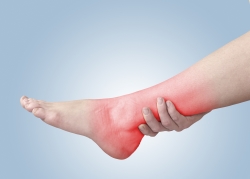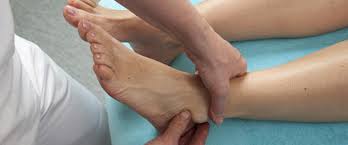
Imagine sitting down with your family to eat dinner one evening, and before the evening news announces the arrival of the next cold front, you feel the twinge of an ache in your legs, thighs, knees, and feet.
It’s the sign you know intuitively that a change in weather is coming.
For many people and even athletes, the pain gets aggravated due to the weather changes, especially when the cold air hits their legs or other joints.
That sudden stiffness in your thighs, the dull ache in your calves, or that tingling in your toes has a surprisingly logical (and slightly scientific) explanation.
Whether you’re an athlete trying to power through the cold or someone who just wants to walk without wincing, understanding why this happens can help you stay warm, pain-free, and a step ahead of winter’s chill.
Why Does My Leg Hurt in the Cold?
You’re not imagining it — winter doesn’t just nip at your nose; it can dig deep into your muscles, joints, and nerves too.
Typically, your leg hurts more when it starts to get cold because of the change in barometric pressure. Due to this, the blood vessels in the joints constrict and become painful.
Here are a few other reasons and a detailed explanation of why your right or left leg thighs might hurt in the cold…
1- Barometric pressure
One hypothesis presents the case that a change in barometric pressure may cause joint pain and discomfort.
The theory behind this is that when the air pressure changes, it causes an inflammatory response within our bodies.
2- Conservation of heat
The second proposed hypothesis is that when exposed to cold temperatures, our body will try to conserve heat and protect our vital organs, like the heart, lungs, and liver.
When this happens, the blood vessels in our extremities constrict, slowing circulation and causing things to get cold and stiff.
This is the same thing that happens when you jump into a cold body of water; blood rushes from your extremities to your core.
3- Reduced blood flow
When it’s cold, your body prioritizes keeping your core organs warm. Blood vessels in your limbs narrow (a process called vasoconstriction), reducing blood flow to your legs and feet.
Less circulation means muscles and joints get less oxygen, making them feel tight, sore, or achy.
4- Stiff muscles and joints
Cold temperatures can make muscles contract and joints lose flexibility. This stiffness is especially noticeable if you already have arthritis or poor flexibility.
The severity of the aching legs during a cold can be to the extent that even simple movements like walking or climbing stairs can suddenly feel like you’ve run a marathon in snow boots.
5- Sensitive nerves
If you have nerve compression issues (like sciatica or neuropathy), cold weather can heighten that sensitivity.
The chill can irritate exposed nerves, triggering shooting pain, tingling, or numbness down your legs and feet.
6- Low activity levels
Winter tends to turn even the most active people into couch cocooners.
Less movement means weaker circulation and tighter muscles — a double whammy for leg and thigh discomfort. Regular stretching or light indoor workouts can make a world of difference in relieving sore legs.
7- Underlying conditions flare up
Conditions like arthritis, fibromyalgia, or poor circulation (e.g., peripheral artery disease) often worsen in the cold.
Even previous injuries can act up because scar tissue and inflamed joints react poorly to temperature drops.
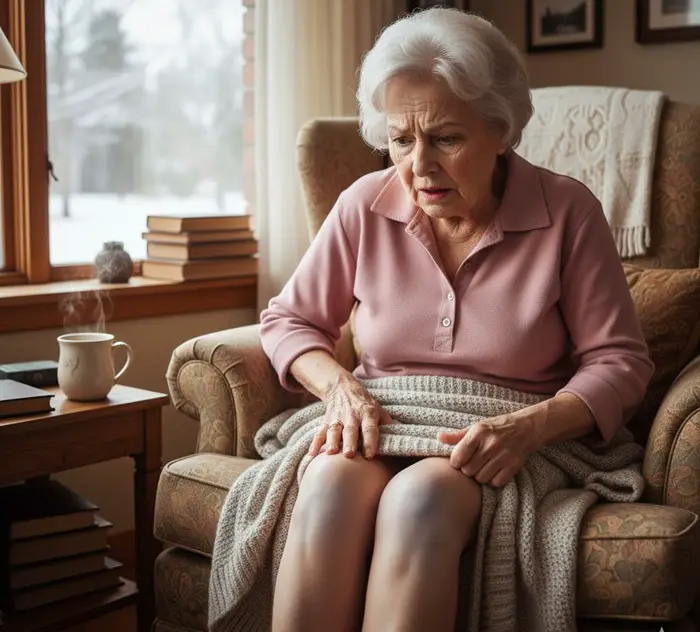
Things to Remember Regarding Cold-Weather Joint Pain
We have been in tune with Mother Nature and her patterns for thousands of years.
Our ancestors knew intuitively when the seasons would start changing, when it was getting ready to rain, and all sorts of weather phenomena.
We may not have had scientific instruments back then to let us know with certainty that the weather was about to change, but that doesn’t change the fact that weather does affect our bodies, some more than others.
Today, a plethora of scientific research has been conducted in an attempt to pinpoint what causes pain and discomfort when it gets colder outside.
Although many of the studies undertaken have very similar results, scientists and researchers say more studies are needed to determine with absolute certainty what the cause is.
Also, remember that most of the studies conducted have been conducted with athletes and people afflicted with some form of arthritis, which can contribute to a person’s sensitivity to changing weather patterns.
There may be more truth behind changing barometric pressure and pain and discomfort than we realize.
Think of it this way: In our bodies, we have air (oxygen, CO2, and other gases) and fluids (blood, plasma, water, etc). Air can be compressed; however, liquids do not compress.
Our bodies have evolved and adapted over millions of years to be able to tolerate our planet’s atmosphere. When the weather changes or we travel to another climate/region, our bodies need time to adjust to the changes.
This is one of the reasons why mountain climbers are aware that ascending too fast can cause headaches, ankle pain, and other symptoms to appear.
This is also the reason why scuba divers know that descending or ascending too quickly can cause health problems, starting in the form of aches and pains within our joints and other body parts.
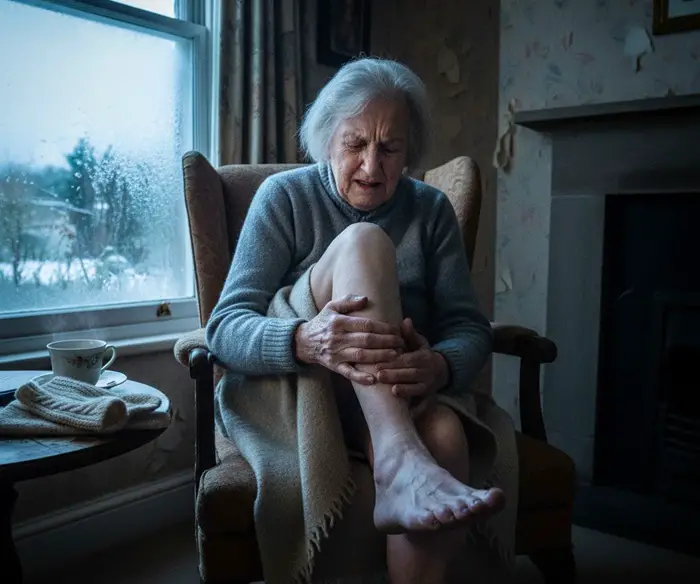
What Body Parts are Most Affected Due to Weather Changes?
Everyone experiences pain and discomfort due to weather changes differently; however, a vast majority of people report different symptoms depending upon what the weather is planning on doing.
Several things happen in our bodies when we experience a dip in degrees.
Our fingertips, toes, ears, and nose may become numb or tingly due to blood vessels contracting; contracting blood vessels can cause circulation to slow down.
It doesn’t have to be 20 below zero for you to experience cold weather aches and joint pains like in the foot, knees, shoulders, etc.
Even people in tropical climates experience this during the winter months when the temperature goes from the lower/mid-’90s to lower/mid-60s with the passing of a cold front.
Diabetics are especially vulnerable to weather changes and cold in particular. Diabetes affects our circulation, and when the temperature drops, it exacerbates the issue.
A whole host of more severe health issues can arise from a lack of proper circulation, so it’s essential to take the necessary steps to stay warm.
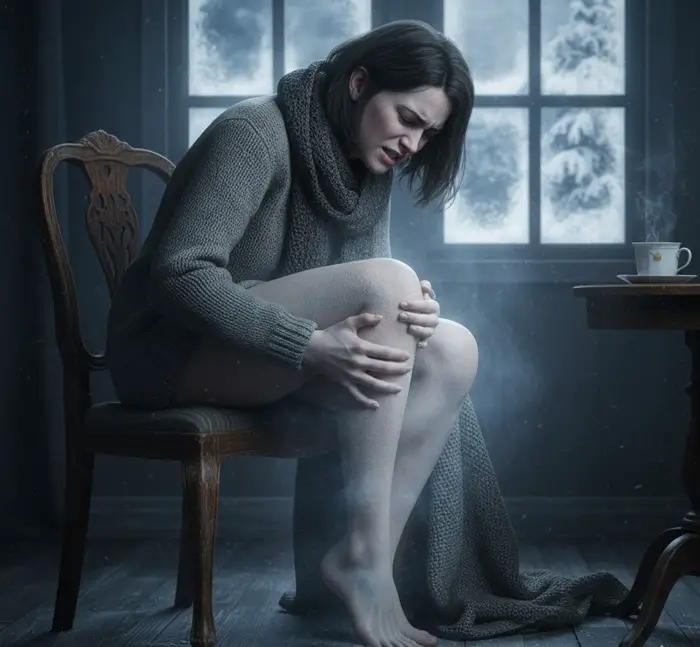
A Few Effective Ways to Prevent Cold-Weather Muscle and Joint Pain
It may seem like common sense to some people, but when you are experiencing pain and discomfort in your ankle joints due to cold weather, you tend not to think about these things.
How do we prevent our muscles and joints from hurting when it’s cold?
These 7 tips will hopefully help alleviate some of your pain.
1- Dress in Layers
A majority of our body heat is lost from our feet, head, and armpits. We also lose heat when we exhale from our mouth; therefore, be sure to dress in layers when it’s cold.
2 pairs of compression socks and long john underwear help keep heat close to your body.
A hat or wool beanie that covers your ears (at least the tips of your ears) to keep the warmth generated by your body from escaping.
Gloves for the hands and fingers. Extra t-shirts, sweaters, or jackets for your core.
2- Use Heating Pads
Heating pads come in several forms. Electrical, chemical, and/or hot water bottles. These pads work by increasing heat to the area they are applied to, increasing circulation and helping blood vessels to expand.
When circulation improves, your red blood cells also carry oxygen to that part of your body. This increase in blood flow and oxygen helps alleviate pain and discomfort.
3- Stay Active
Staying active during the cold frigid winter months can help your muscles and joints loosen up. Particularly for the elderly, stiffness in muscles and bones when caused due to mercury drop can make the problem worse.
Going outdoors to exercise may be out of the question, but there are many things we can do indoors. Stretching, swimming, yoga, tai-chi, and walking/jogging on a treadmill are just a few of the things we can do.
4- Get a Massage
It’s not just a guilty pleasure to indulge yourself in; there’s scientific proof that massages help alleviate pain, increase circulation, and stimulates the release of endorphins throughout the body.
The Journal of Alternative and Complementary Medicine published an article in June 2015 with research showing a decrease in pain and an increase in joint mobility among veterans who received a 1-hour massage for 8-weeks.
5- Get Some Sunshine
Unless you live in places like Antarctica, good sunshine is always available at a certain time of day.
For people suffering from severe cold-weather joint pain, it’s good to get some natural heat from the sun to help alleviate their joint aches.
6- Eat and Drink Warm
Depending upon what climate you live in, consuming warm foods and beverages can warm you up and might help alleviate joint and muscle discomfort and stiffness.
Consuming cold foods and beverages also does the same, but it all depends on what you are eating.
Aside from arthritis, eating unhealthy foods makes it hard for your body to operate effectively and leaves you more susceptible to the cold.
Eating healthy foods like whole grains, fruits, vegetables, and lean meats helps your body function properly and stave off those cold aches and pains.
7- Play and Workout Inside
While workouts and regular exercising are important for healthy joints, it does not mean that you go out to hit the gym or run for hours, even in extremely cold conditions.
Staying indoors and moving your workouts there can be a healthy way instead. Use your treadmill, stationary bike, or other equipment to keep your joints moving and in good condition.
For kids who are prone to cold-weather allergies and joint pain, it’s good to play indoor games rather than play outdoors with friends.
What to Do If I Feel a Weird Cold Wet Sensation in One Leg or Upper Thigh?
If you sometimes feel like cold water running down your leg, or experience a cold wet sensation on your thigh, it’s more than just a seasonal chill.
This random cold sensation in one leg, especially around the lower leg or upper thigh area, can signal an underlying nerve or circulation issue.
Common causes include irritated sensory nerves (such as from a pinched nerve in your lower back), mild neuropathy, or even poor blood flow.
It’s best not to ignore it — especially if it happens often or comes with numbness, tingling, or weakness.
What to do:
- Keep the area warm and avoid sitting in one position too long.
- Try light stretching or gentle walks to improve blood flow.
- Check your posture and avoid pressure on your lower back or thighs.
- If the sensation persists or worsens, consult a doctor or neurologist for a nerve conduction or circulation test — it’s often the fastest way to find the real cause.
To conclude
In short, when temperatures drop, your body goes into survival mode — conserving heat by restricting blood flow to your legs and feet.
This reduced circulation, combined with muscle stiffness, nerve sensitivity, and old injuries flaring up, can make your lower limbs ache or feel unusually tight. The discomfort isn’t just in your head; it’s your body reacting to the cold’s physiological stress.
While there might not be much we can do to control the weather, knowing what weather changes are coming and when can help us stay ahead of muscle and joint pain.
You can’t fight Mother Nature, but you can prevent her from totally ruining your day with well-laid plans.
Staying active, keeping your legs warm, and improving circulation through gentle movement or massage can help you beat the chill.
So next time winter bites, you’ll know exactly why your legs protest — and how to calm them.



